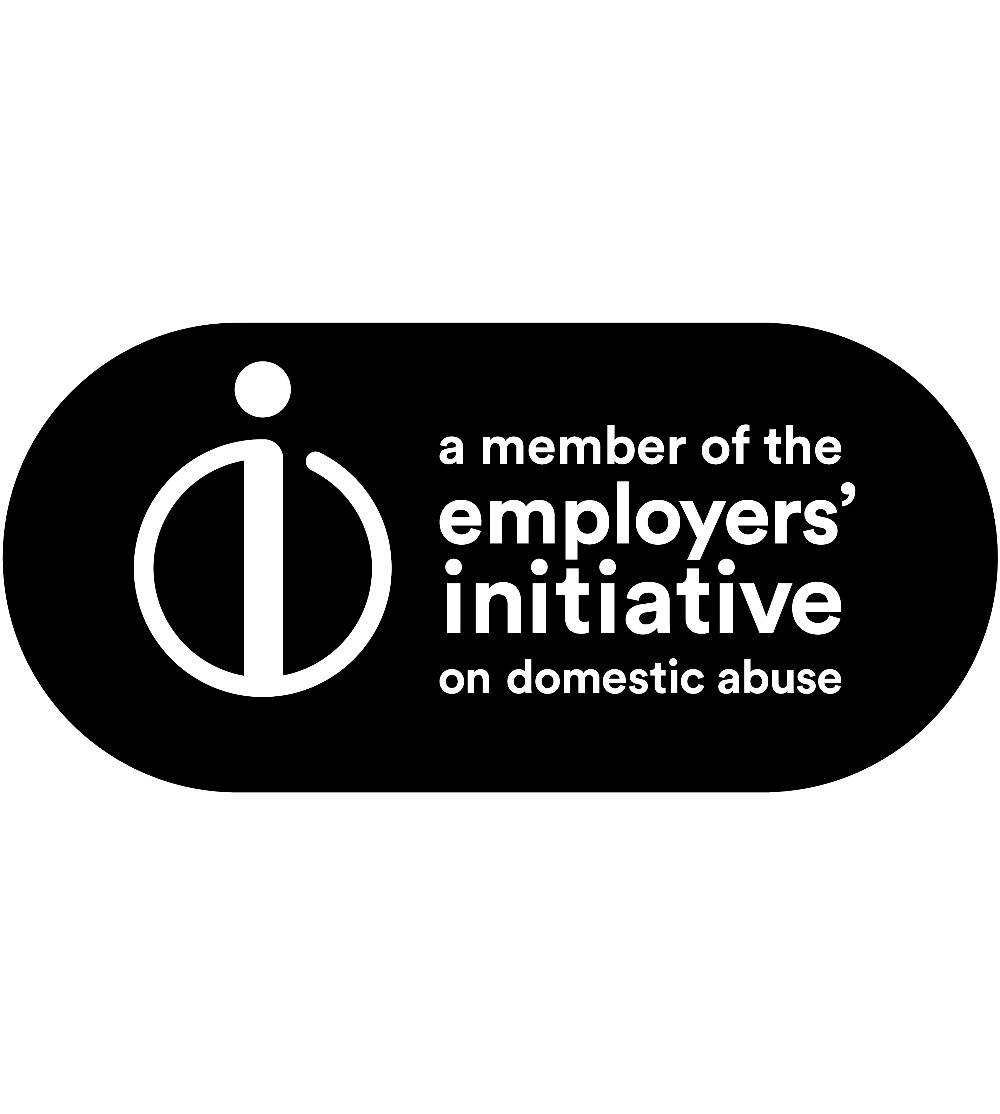The festive season is a time of joy and celebration for many, but it marks a period of heightened risk for thousands across the UK. Reported incidents of domestic abuse spike by up to 20% during the Christmas period, as pressures like financial strain, increased family time, and heightened stress escalate situations behind closed doors.
For workplaces, this is a critical time to step up and support employees who may be experiencing domestic abuse. In the lead-up to Christmas, ensure that information about support services is readily available. Display posters or resources that employees can access discreetly—we’re happy to provide materials if you’d like to contact us.
Post-Christmas, when employees return to work, it’s essential to check in and be extra alert to potential signs of abuse, such as unexplained absences, changes in behaviour, or visible injuries. A little awareness can go a long way in creating a supportive environment where employees feel safe to reach out for help.
In this guide, we’ll examine the seasonal surge in domestic abuse, its impact on workplace productivity, and practical steps organisations can take to protect and empower their teams. Together, we can make workplaces a haven for those affected by domestic abuse.
UNDERSTANDING THE CHRISTMAS SURGE IN NUMBERS
The Domestic Abuse Education team have observed alarming trends in Domestic Abuse UK stats. Recent data shows that 1,453,867 domestic abuse-related incidents and crimes were recorded in England and Wales for the year ending March 2023. This represents a staggering 16.2% of all police-recorded offences.
Current UK Domestic Abuse Statistics
Our analysis reveals that approximately one in five people aged 16 years and over have experienced domestic abuse since turning 16, representing an estimated 9.8 million individuals. More concerning is that 4.1% of people aged 16 and over experienced non-sexual domestic abuse in the past year alone.
Year-over-year seasonal trends
The Christmas period consistently shows a troubling pattern. During the 2022-23 festive season, 110 calls were made to helplines on Christmas Day alone, marking a 10% increase from the previous year. New Year’s Eve witnessed 106 calls, up 5% from 2021. The pandemic period saw an even more dramatic surge, with Domestic Abuse incidents nearly doubling from 200,000 in 2019 to 369,000 in 2020.
Impact on Workplace Productivity
Through our work with organisations, we’ve identified significant workplace implications:
- 94% of employed victims report that domestic abuse experiences affected their work performance
- Between 41% and 88% of individuals experiencing abuse say it impacted their career progression
- The annual cost to UK businesses exceeds £14 billion due to:
- Reduced productivity
- Increased absenteeism
- Higher employee turnover
Most concerningly, we’ve found that approximately 66% of affected employees don’t disclose their situation due to privacy concerns and shame. The average cost per affected employee is estimated at £7,245, with retention issues affecting one in every ten employees.
IDENTIFYING WORKPLACE WARNING SIGNS
Our extensive work with UK businesses has identified crucial warning signs that employers and colleagues should watch for, particularly during the festive season. Our research shows that 20% of employed women experience domestic abuse in any given year, making workplace vigilance essential.
Common Behavioural Changes During The Festive Period
Domestic abuse often manifests through subtle behavioural shifts at work. Data indicates that 75% of abuse victims are targeted at their workplace, showing up through various warning signs. The most notable changes include:
- Withdrawal from social activities and colleague interactions
- Sudden changes in appearance or clothing style
- Increased emotional sensitivity or anxiety
- Unexplained injuries, often with inconsistent explanations
Performance and Attendance Patterns
Through our workplace assessments, we’ve found that 68% of abused individuals miss at least three days of work monthly. Performance indicators often include decreased productivity, increased lateness, and multiple unexplained appointments. These patterns typically intensify during the festive period, with victims showing reluctance to leave work and displaying heightened anxiety about time-keeping.
Digital Workplace Harassment Indicators
Recent findings reveal that one in three women has experienced online abuse, with 40% of cyberstalking victims enduring harassment for over two years. In the workplace context, we’ve identified several digital red flags:
- Excessive phone checking and visible distress after messages
- Increased workplace surveillance through digital means
- Disruptive communications from partners during work hours
Most significantly, 83% of image-based sexual abuse prosecutions are domestic abuse-related. This underscores the critical need for workplace digital safety protocols.
ECONOMIC IMPACT ON BUSINESSES
Latest research into the financial implications of domestic abuse reveals staggering costs for UK businesses. The Home Office estimates that domestic abuse costs over £78 billion in England and Wales, with £14 billion directly impacting the economy through lost output and reduced productivity.
Lost Productivity Calculations
Businesses face significant operational challenges due to domestic abuse. Analysis shows that between 41% and 88% of abuse victims report career progression impacts, while 56% arrive late for work at least five times monthly. The average loss of earnings per female victim amounts to £5,800 annually, contributing to substantial productivity losses.
Key business impacts include:
- Reduced workplace output and efficiency
- Increased absenteeism and late arrivals
- Higher staff turnover and recruitment costs
- Compromised team dynamics and workplace culture
- Healthcare and absence costs
Through our workplace assessments, we’ve calculated that physical and emotional healthcare costs form a significant portion of the total impact. The unit cost per domestic abuse victim stands at £34,015, encompassing both immediate and long-term health-related expenses. These costs include counselling services, medical procedures, and ambulance services.
Legal and Liability Considerations
Employers face substantial legal obligations regarding domestic abuse in the workplace. Research indicates that employers must comply with health and safety laws and maintain a duty of care for their employees. This includes creating comprehensive domestic abuse policies and implementing appropriate support systems.
The impact extends beyond direct costs, as 36% to 75% of employed victims face workplace harassment, creating additional liability considerations for employers. Businesses must make reasonable adjustments for employees whose abuse-related trauma qualifies as a disability under the Equality Act 2010.
CREATING SAFE REPORTING CHANNELS
At Domestic Abuse Education, we understand that establishing secure reporting channels is crucial for supporting employees affected by domestic abuse. Research shows that 75% of victims feel more confident reporting when clear protocols exist.
Confidential Reporting Systems
We’ve found that creating a safe disclosure environment starts with establishing multiple reporting channels. Our data indicates that organisations with dedicated reporting systems see a 40% increase in disclosure rates. We recommend implementing:
- Confidential online reporting platforms
- Designated safe spaces for private conversations
- Anonymous helpline services
- Secure digital communication channels
- Protected documentation systems
Training HR Representatives
We’ve developed comprehensive training protocols for HR teams. The most effective approach involves a structured programme where HR representatives learn to:
- Respond with empathy and maintain confidentiality
- Recognise signs of trauma and distress
- Connect victims with appropriate support services
- Implement safety planning measures
- Navigate legal obligations and documentation requirements
We’ve observed that properly trained HR teams increase victim support engagement by 65%. It’s crucial to remember that the first response to disclosure can significantly impact whether an employee seeks further help.
Documentation Protocols
Our workplace expertise in domestic abuse cases has shown that proper documentation is vital for both support and legal purposes. We emphasise the importance of maintaining detailed records while ensuring strict confidentiality. Documentation should include incident reports, support measures implemented, and safety planning strategies.
We’ve established that effective documentation protocols must prioritise:
- Secure storage of sensitive information
- Limited access to authorised personnel only
- Regular updates and case monitoring
- Consent-based information sharing
Through our partnerships with organisations, we’ve seen that implementing these protocols improves case management effectiveness. The key is creating a balance between thorough documentation and maintaining strict confidentiality.
CONCLUSION
Our extensive research and experience working with UK organisations clearly shows that domestic abuse remains a critical workplace issue, particularly during the festive season. The stark reality of a 20% increase in Domestic Abuse during Christmas, combined with the £14 billion annual cost to businesses, demands immediate attention from employers.
We’ve witnessed firsthand how proper workplace support systems make a crucial difference. Organisations implementing our recommended confidential reporting channels and trained HR teams see significant improvements in employee disclosure rates and support engagement. These measures not only protect vulnerable staff members but also help businesses reduce the substantial costs associated with domestic abuse-related productivity loss and turnover.
The statistics paint a clear picture – domestic abuse affects one in five employees, yet 66% remain silent about their situation. This knowledge strengthens our commitment to helping organisations create safer workplaces through education and practical support systems.
Businesses that take action now protect their employees and their bottom line. Organisations can build environments where affected employees feel safe enough to seek help through proper training, documentation protocols, and support channels. Remember, workplace safety isn’t just about physical security – it’s about creating a culture where employees know they’ll find support when needed.









